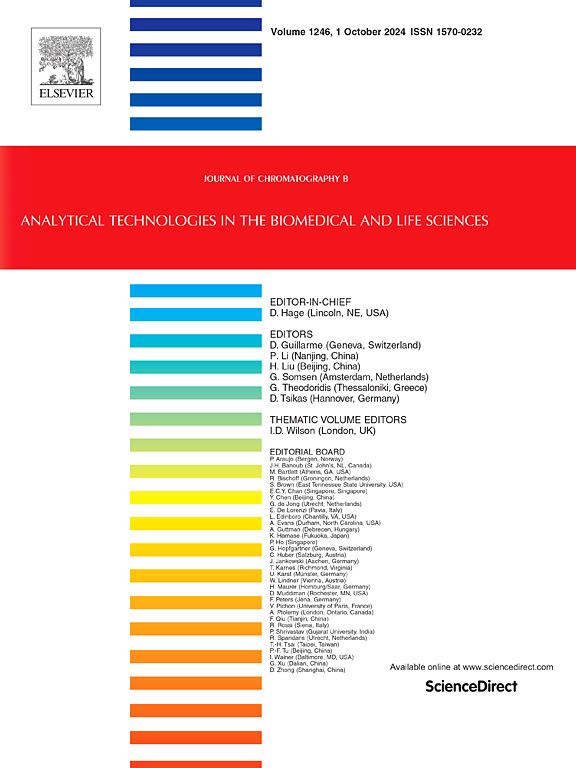LC-HRMS of derivatized urinary estrogens and estrogen metabolites in postmenopausal women
Abstract
In order to undertake an epidemiologic study relating levels of parent estrogens (estrone and estradiol) and estrogen metabolites (EMs) to other breast cancer risk factors, we have optimized methods for EM quantification with ultra high performance liquid chromatography-high resolution mass spectrometry (UHPLC-HRMS). A two-step approach was adopted; the first step comprised method development and evaluation of the method performance. The second step consisted of applying this method to quantify estrogens in postmenopausal women and determine if the observed patterns are consistent with the existing literature and prior knowledge of estrogen metabolism. First, 1-methylimidazole-2-sulfonyl chloride (MIS) was used to derivatize endogenous estrogens and estrogen metabolites in urine from study participants. Since C18 reversed phase columns have not been able to separate all the structurally related EMs, we used a C18-pentafluorophenyl (PFP) column. The parent estrogens and EMs were baseline resolved with distinct retention times on this C18-PFP column using a 30 min gradient. This method was used to quantify the parent estrogens and 13 EMs in urine samples collected in an initial pilot study involving males as well as pre- and peri-menopausal females to assess a range of EM levels in urine samples and enable comparison to the previous literature for assay evaluation. Detection limits ranged from 1 − 20 pg/mL depending on the EM. We evaluated matrix effects and interference as well as the intra- and inter-batch reproducibility including hydrolysis, extraction, derivatization and LC-MS analysis using charcoal-stripped human urine as a matrix. Methods were then applied to the measurement of estrogens in urine samples from 169 postmenopausal women enrolled in an epidemiological study to examine relationships between breast cancer risk, the intestinal microbiome, and urinary EMs. The results from our cohort are comparable to previous reports on urinary EMs in postmenopausal women and enabled thorough evaluation of the method.

 求助内容:
求助内容: 应助结果提醒方式:
应助结果提醒方式:


